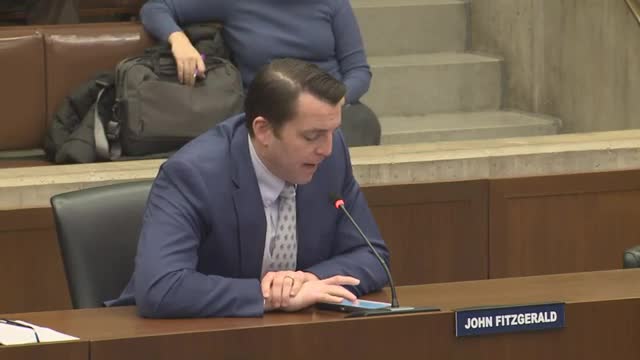Boston City Council debates $80M renovation for White Stadium amid budget concerns
January 22, 2025 | Boston City, Suffolk County, Massachusetts
This article was created by AI summarizing key points discussed. AI makes mistakes, so for full details and context, please refer to the video of the full meeting. Please report any errors so we can fix them. Report an error »

The Boston City Council convened on January 22, 2025, to discuss critical issues surrounding government accountability, transparency, and accessibility, with a particular focus on the Madison Park project and White Stadium renovations.
The meeting began with inquiries regarding the financial expenditures related to Madison Park. Council members sought clarity on the total amount spent on consultants, which was reported to be under $5 million, including the feasibility phase. Discussions highlighted the importance of leveraging state funds through collaboration with the Massachusetts School Building Authority (MSBA) to optimize costs while ensuring the school is appropriately sized for its current enrollment of approximately 1,100 students. The attendance rate at Madison Park was noted to be around 87%, reflecting a 10% increase from the previous year.
Attention then shifted to White Stadium, where operational costs were discussed. A council member clarified that the projected annual operational cost for the private sector would be $2 million. This led to reflections on past experiences with stadium projects in Boston, emphasizing the need for community engagement and careful consideration of public funds.
Councilor Murphy expressed strong sentiments regarding the necessity for high-quality facilities for students, advocating for increased investment in athletics and school infrastructure. She pointed out the disparity in spending on athletics compared to surrounding towns, stressing the importance of fiscal responsibility while addressing the urgent needs of Boston's schools. Murphy raised concerns about the proposed $80 million renovation of White Stadium, questioning the rationale behind such expenditures when the city is already committed to a $100 million investment.
The meeting concluded with a consensus on the need for transparency and accountability in financial decisions affecting the city's educational and recreational facilities. Council members acknowledged the challenges of balancing budgetary constraints with the imperative to provide quality environments for students and the community. Further discussions and follow-up actions are anticipated in future meetings as the council continues to navigate these complex issues.
The meeting began with inquiries regarding the financial expenditures related to Madison Park. Council members sought clarity on the total amount spent on consultants, which was reported to be under $5 million, including the feasibility phase. Discussions highlighted the importance of leveraging state funds through collaboration with the Massachusetts School Building Authority (MSBA) to optimize costs while ensuring the school is appropriately sized for its current enrollment of approximately 1,100 students. The attendance rate at Madison Park was noted to be around 87%, reflecting a 10% increase from the previous year.
Attention then shifted to White Stadium, where operational costs were discussed. A council member clarified that the projected annual operational cost for the private sector would be $2 million. This led to reflections on past experiences with stadium projects in Boston, emphasizing the need for community engagement and careful consideration of public funds.
Councilor Murphy expressed strong sentiments regarding the necessity for high-quality facilities for students, advocating for increased investment in athletics and school infrastructure. She pointed out the disparity in spending on athletics compared to surrounding towns, stressing the importance of fiscal responsibility while addressing the urgent needs of Boston's schools. Murphy raised concerns about the proposed $80 million renovation of White Stadium, questioning the rationale behind such expenditures when the city is already committed to a $100 million investment.
The meeting concluded with a consensus on the need for transparency and accountability in financial decisions affecting the city's educational and recreational facilities. Council members acknowledged the challenges of balancing budgetary constraints with the imperative to provide quality environments for students and the community. Further discussions and follow-up actions are anticipated in future meetings as the council continues to navigate these complex issues.
View full meeting
This article is based on a recent meeting—watch the full video and explore the complete transcript for deeper insights into the discussion.
View full meeting
